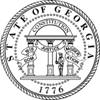
Governor Perdue, Superintendent Cox Announce Georgia as Leader in AP Success
| Thursday, August 30, 2007 |
Contact: Office of Communications 404-651-7774
|
ATLANTA- Governor Sonny Perdue and Superintendent Kathy Cox announced today that Georgia students continue to outpace the nation in the growth of students taking, and succeeding in, rigorous Advanced Placement classes. The state also continues to be a national leader in AP participation among African-American students, according to a College Board report released this week.
“Our AP participation rates are a prime example of how students across Georgia are not only rising to their educational challenges, but exceeding expectations,” said Governor Sonny Perdue. “With the continued efforts of parents, teachers, students and the state government, I am certain that we will continue to gain momentum towards creating a more prosperous future for Georgia’s educational system.”
Georgia saw 13.2 percent growth in the number of students taking AP classes and an 11.3 percent jump in the number of AP exams receiving a passing score. The growth in AP participation among Georgia's African-American students was nearly 23 percent, and among Hispanic students it was nearly 30 percent.
State Superintendent of Schools Kathy Cox said this is further proof that all Georgia students want to take rigorous classes.
"AP is perhaps the best indicator we have that our students want to challenge themselves with college-level work and can handle college-level work," Superintendent Cox said. "It just goes to show that when you set high expectations, students will rise up to meet them."
Advanced Placement classes are college-level courses offered by trained high school teachers in the regular high school setting. AP students take the AP exams, which are scored on a scale from 1 to 5, each year in May. A score of 3 or higher can result in college or university credit.
As Georgia's participation in AP grows, success on the AP exams grows as well. In 2007, the pass rate on AP exams was 53.3 percent -- an increase of 2.2 percentage points. In 2006, Georgia's pass rate of 53.1 percent was 35th highest in the nation. (Comparative data is not available for 2007 yet)
"People who want to compare Georgia to other states need to get beyond just looking at the SAT," said Superintendent Cox. "The AP data is a strong indicator that more Georgia students every year are taking college level classes and are succeeding in those classes."
Georgia continues to encourage students to take AP classes through a variety of programs and efforts.
- At the request of Governor Perdue and Superintendent Cox, the Legislature has approved money to pay for students to take one AP exam a year. Economically disadvantaged students can have all of their AP exams paid for each year.
- The Georgia Department of Education has organized the distribution of AP Teacher Quality Training Grants. This past summer the GaDOE offered grants to 60 teachers to attend training on effective teaching of AP classes. In the past two years, more than 200 AP teachers have been trained through state grants.
- The Georgia Virtual School continues to add AP classes, increasing access to students throughout the state, including those that might not otherwise be able to take an AP class.
- The Governor's Office of Student Achievement has secured a $500,000 grant to increase access to AP to all students in selected schools.
PARTICIPATION GROWS
According to the College Board, Georgia AP Participation is growing in every category
# of AP Test Takers # of Tests Taken # of Tests score 3, 4 or 5
All Students 49,448 (+13.2%) 79,017 (+12.2%) 43,719 (+11.3%)
African American 8.902 (+22.7%) 12,189 (+21.1%) 2,918 (+19%)
Hispanic 2,177 (+29.7%) 3,239 (+25.8%) 1,654 (+18.1%)
White 30,848 (+10.9%) 49,652 (+11%) 30,591 (+11.3%)
FASTER THAN THE NATION
Georgia's growth is outpacing the nation's growth
Growth in Test Takers Growth in Tests Taken Growth in Tests score 3, 4 or 5
Ga. Nation Ga. Nation Ga. Nation
All Students 13.2% 9.3% 12.2% 9.5% 11.3% 9%
African-American 22.7% 16.8% 21.1% 15.9% 19% 15.5%
Hispanic 29.7% 13.3% 25.8% 14.5% 18.1% 6%
White 10.9% 9.1% 11% 10.2% 11.3% 10.5%

 Print
Print
 Text Size
Text Size